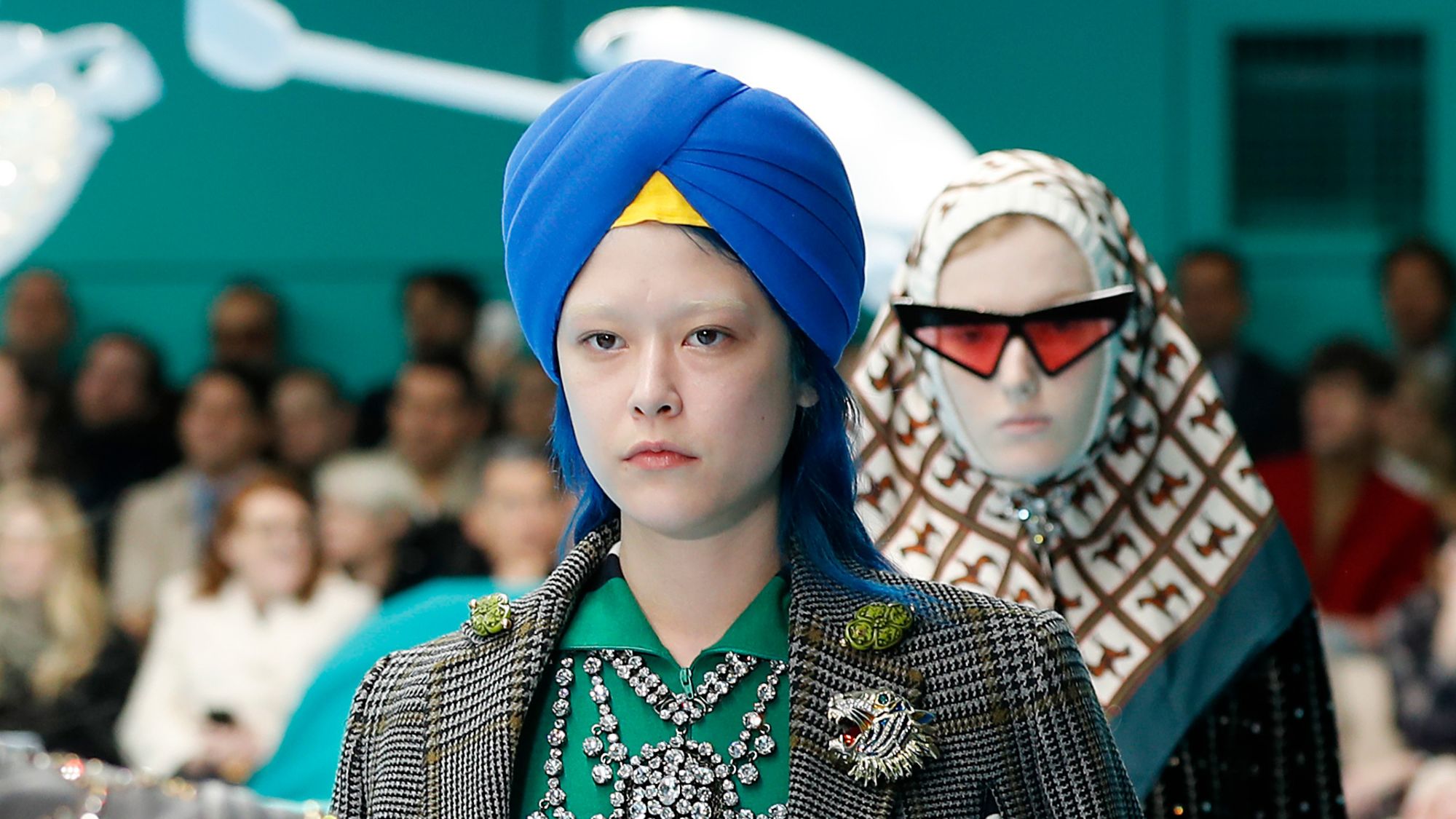It’s only been three months since Gucci had to apologize for its blackface sweater. But it seems the brand hasn’t learned its lesson.
The Italian fashion house made headlines earlier this week for its “Indy Full Turban,” which was listed for sale on the website of luxury department store Nordstrom for a whopping $790.
The blue turban closely resembled the style of turbans worn by millions of Sikhs around the world, and people in the Sikh community were offended, calling out both Gucci and Nordstrom for cultural appropriation, insensitivity and the hefty price tag.
Nordstrom eventually pulled the turban from its website and apologized.
“We have decided to stop carrying this product and have removed it from the site,” the retailer wrote in response to a complaint on Twitter. “It was never our intent to disrespect this religious and cultural symbol. We sincerely apologize to anyone who may have been offended by this.”
Gucci still hasn’t addressed the matter.
Here’s why Sikhs took issue with Gucci’s turban.
Sikhs get attacked for wearing turbans
Turbans are the most visible markers of Sikh identity, and they often make Sikhs the targets of hate-fueled attacks, discrimination and bullying. That Gucci and Nordstrom would profit off the same style of turban without any understanding of its significance is a blatant example of cultural appropriation, some members of the Sikh community say.
“When companies like Gucci appropriate articles of faith, like the turban they are trying to capitalize on, they do not take into consideration the discrimination that Sikhs face while adhering to the tenets of their faith,” the Sikh Coalition wrote in a Facebook post on Thursday.
“We’re attacked and killed for how we look, and now corporations get to profit off that same look?” Simran Jeet Singh wrote.
“This is beyond aggravating. Did someone at @gucci even bother to figure out what a dastaar (turban) means to Sikhs? Did it cross your minds to consider the history behind our identity? My people are discriminated against, even killed, for wearing a turban,” Aasees Kaur wrote.
The turban isn’t a fashion accessory
Another point of frustration for Sikhs was that the Gucci turban was being marketed as a fashion accessory – a hat that one could simply put on and take off with ease and at will.
The turban isn’t just something Sikhs plop on their heads before they head out the door in the morning. It’s a symbol of faith and religious tradition considered sacred by Sikhs. Tying a turban is a painstaking and thoughtful process that involves taking a long piece of cloth and wrapping it neatly, fold by fold over one’s uncut hair – another symbol of the Sikh faith.
“Dear @gucci, the Sikh Turban is not a hot new accessory for white models but an article of faith for practising Sikhs. Your models have used Turbans as ‘hats’ whereas practising Sikhs tie them neatly fold-by-fold. Using fake Sikhs/Turbans is worse than selling fake Gucci products,” Harjinder Singh Kukreja wrote on Twitter.
Another user had some advice for anyone who might have considered dropping $800 on the “Indy Full Turban.”
“Dear NON-SIKHS …. don’t waste $750 buying a fake n fancy @gucci turban from @Nordstrom !! You can inbox me your location and I can arrange FREE lessons in Turban tying in most places and provide cloth material..FREE ! Any colour.”
The Sikh turban is a symbol of equality
Selling a luxury version of the Sikh turban for nearly $800 is contradictory to everything the turban represents and ignores the history from which it came about, some members of the Sikh community say.
While the turban dates back thousands of years and has been worn by many cultures across different faiths, the Sikh practice of wearing a turban has its origins in India.
Turbans were historically worn by royalty and high officials as a symbol of elite status. And under the Mughal emperor Aurangzeb, who came into power in 1658, only the Islamic ruling class were permitted to wear turbans.
The Sikhs’ leaders, also known as the Gurus, rejected social hierarchies and adopted turbans as an act of resistance. At the command of Guru Gobind Singh, followers of the Sikh faith began wearing turbans over their uncut hair to assert the equality and freedom of all people.
“For Sikhs, the turban is a crown. It is a sign of equality, that no person is greater than the other. That is why Sikhs have taken what was traditionally a sign of royalty and made it into everyday wear. It is meant to be cheap and accessible for all,” Jasvir Singh wrote.

